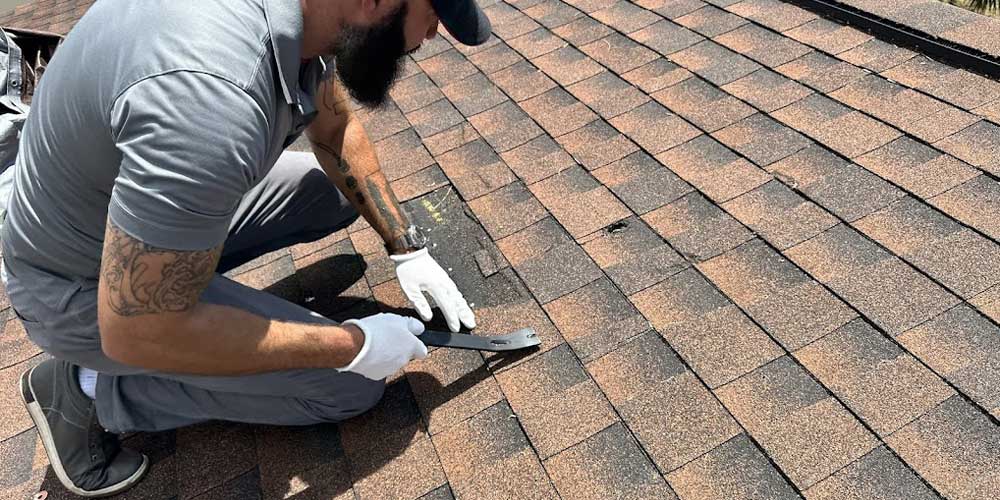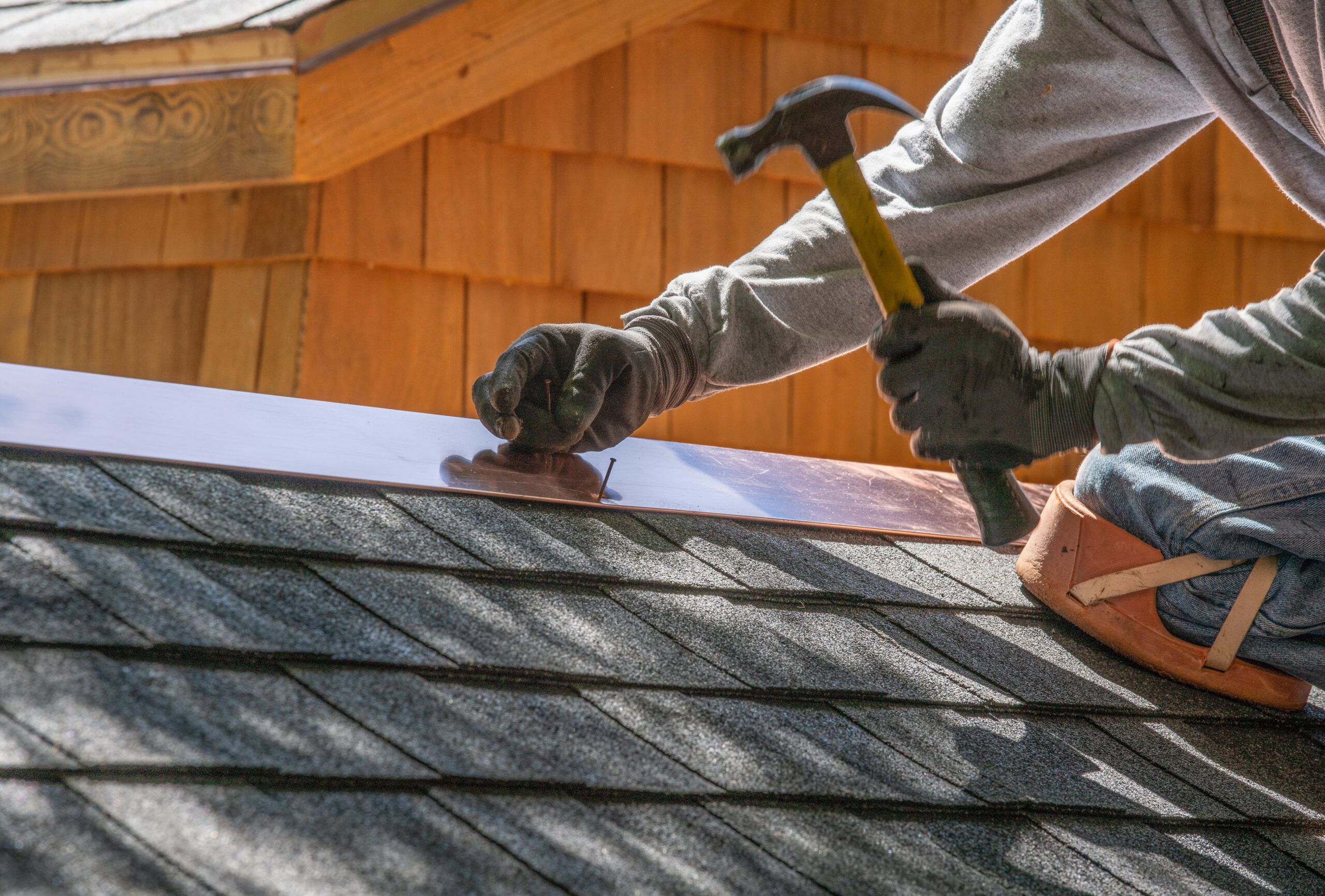Roofers Oahu: Expert Roof Installations and Fixes
Roofers Oahu: Expert Roof Installations and Fixes
Blog Article
Understanding the Various Kinds Of Roofing Systems: A Comprehensive Guide for Homeowners
With a range of alternatives-- ranging from the standard gable to the modern level-- each type provides unique advantages and obstacles that ought to straighten with the homeowner's specific demands and environmental factors to consider. As we discover the complexities of various roofing types, it comes to be evident that one dimension does not fit all; the best selection may stun you.
Gable Roofing Systems
Gable roofing systems, defined by their triangular shape, are amongst one of the most prominent roofing styles as a result of their simpleness and performance in dropping water and snow. This layout includes 2 sloping sides that fulfill at a ridge, allowing for effective drain and minimizing the threat of water buildup. The steep pitch commonly linked with saddleback roofs improves their capacity to deal with heavy rainfall, making them suitable for various climates.
Along with their useful benefits, saddleback roofs use aesthetic flexibility. They can be adapted to numerous building styles, from traditional to modern-day homes. The style can likewise fit added functions such as dormer windows, which boost all-natural light and air flow in the attic space.
In addition, gable roofing systems supply sufficient room for insulation, adding to energy performance. Homeowners can select from a range of roof materials, consisting of asphalt shingles, metal, and floor tiles, better enhancing modification choices.
In spite of their benefits, gable roof coverings may call for added assistance in areas vulnerable to high winds or heavy snowfall. In general, the saddleback roof continues to be a preferred selection because of its blend of functionality, toughness, and visual appeal.
Flat Roofs
Flat roofings are commonly acknowledged for their minimal design and useful applications, especially in industrial and industrial setups (oahu roofing). These roof coverings include a almost straight or horizontal surface area, which enables very easy construction and versatile space application. While they might do not have the aesthetic allure of angled roofs, flat roofs provide numerous advantages, specifically in metropolitan environments where optimizing space is essential
One of the key benefits of level roofing systems is their accessibility. Home owners can make use of the roofing system space for various purposes, such as roof gardens, terraces, or solar panel installments. In addition, flat roof coverings are commonly a lot more affordable to keep and mount contrasted to their sloped equivalents, as they need fewer materials and labor.
Common products utilized for flat roofing systems consist of built-up roofing (BUR), customized asphalt, and single-ply membrane layers, each offering distinct benefits. On the whole, level roof coverings serve as a versatile and functional option for several house owners and organizations alike.
Hip Roofings
Hip roof coverings are characterized by their sloped sides that merge at the top, forming a ridge. This style is unique from saddleback roofs, as all 4 sides of a hip roofing slope downwards toward the wall surfaces, providing a much more steady framework. The angle of the slopes can vary, permitting versatility in building aesthetic appeals and capability.
Among the primary advantages of hip roofing systems is their capability to hold up against hefty winds and unfavorable climate problems. The sloped surfaces make it this content possible for far better water drainage, lowering the danger of leakages and water damages. In addition, hip roofing systems offer boosted attic room space, which can be utilized for storage or also exchanged habitable areas.
However, creating a hip roof can be a lot more expensive and complicated than simpler roof covering kinds, such as saddleback roofs. The additional product and labor involved in developing the slopes and ensuring appropriate architectural honesty can lead to greater costs. Despite these disadvantages, lots of home owners favor hip roofs for their toughness, aesthetic appeal, and potential for energy efficiency.
Mansard Roof Coverings
Mansard roofs, frequently recognized by their distinct four-sided layout, attribute 2 inclines on each side, with the lower incline being steeper than the upper. This building style, originating from France in the 17th century, is not only cosmetically appealing yet functional, as it makes the most of the functional space in the upper floors of a structure. The steep lower slope permits even more clearance, making it an ideal option for loft spaces or attics, which can be exchanged living spaces.
Mansard roof coverings are identified by their convenience, accommodating numerous building designs, from conventional to modern. They can be built with various products, consisting of asphalt roof shingles, slate, or steel, supplying house owners with a variety of options to match their choices and spending plans. Furthermore, the layout enables the assimilation of dormer home windows, enhancing natural light and air flow in the upper levels.
Nonetheless, it is vital to consider the possible disadvantages. Mansard roofs may call for even more maintenance because of the intricacy of their design, and their steep inclines can be challenging for snow and rain runoff. In general, mansard roofings incorporate style with usefulness, making them directory a prominent selection amongst homeowners seeking distinctive building functions.
Lost Roof Coverings
As home owners progressively seek simplicity and functionality in their building styles, lost roof coverings have become a popular choice. Characterized by a solitary sloping airplane, a shed roof covering offers a minimal aesthetic that matches various home styles, from contemporary to rustic.
Among he has a good point the main benefits of a shed roofing is its uncomplicated building and construction, which typically equates to reduce labor and product costs. This layout permits for efficient water drainage, lowering the danger of leakages and water damage. Additionally, the upright slope supplies sufficient room for skylights, enhancing all-natural light within the interior.
Dropped roofing systems also use flexibility in terms of usage. They can be effectively integrated right into additions, garages, or outside frameworks like pavilions and sheds. Moreover, this roof style can fit different roof products, consisting of metal, asphalt tiles, or perhaps environment-friendly roofings, lining up with environment-friendly initiatives.
However, it is important to take into consideration regional environment problems, as heavy snow loads might require changes to the roof covering's angle or structure. Overall, dropped roofs offer a functional and cosmetically pleasing alternative for homeowners aiming to take full advantage of capability without jeopardizing design.
Verdict


Gable roof coverings, identified by their triangular shape, are amongst the most prominent roofing styles due to their simplicity and effectiveness in losing water and snow. oahu roofing. The steep pitch commonly associated with gable roof coverings boosts their capability to deal with heavy precipitation, making them ideal for different climates
While they may lack the visual charm of pitched roofs, flat roofs supply various benefits, particularly in city environments where making the most of space is important.

Report this page